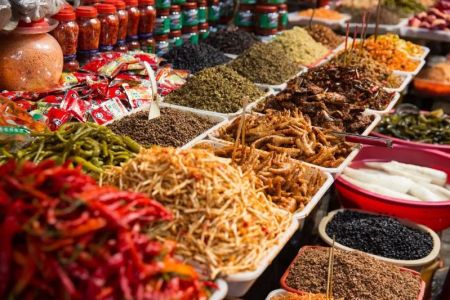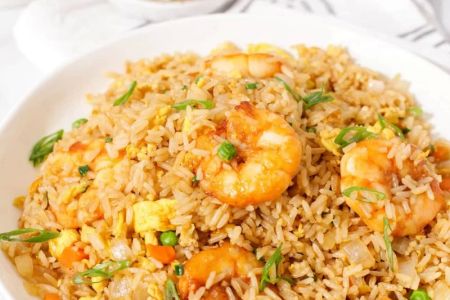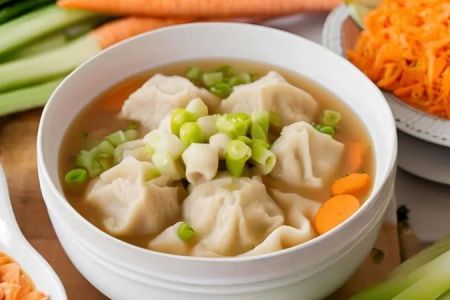- why-authentic-chinese-cuisine-stands-out
- regional-diversity-in-chinese-restaurants
- ambiance-matters-modern-and-cultural-fusion
- case-in-point-trending-spots-and-local-gems
- what-to-look-for-when-choosing-the-best-chinese-restaurant
- discover-your-next-dining-experience-on-chinese-food
1. Why Authentic Chinese Cuisine Stands Out in a Sea of Dining Options
There’s something undeniably special about a great Chinese restaurant—not just for the food, but for the entire experience. It’s where comfort meets craft, where family-style dining intersects with sophisticated flavor profiles. For many food lovers in urban areas across the U.S., the best Chinese restaurants offer more than just a meal; they offer a window into a rich culinary tradition shaped by history, innovation, and regional pride.
Whether it's the deep umami of a slow-braised pork belly or the tingling sensation of Sichuan peppercorns, Chinese cuisine delivers complexity that rewards curious palates. What makes it unique is not just taste—but texture, balance, and centuries-old technique.
2. Regional Diversity in Chinese Restaurants You Need to Know
To talk about “Chinese food” is to talk about many cuisines under one cultural roof. Today’s best Chinese restaurants proudly highlight regional differences—from the fiery dishes of Sichuan to the delicate soup dumplings of Jiangnan.
2.1. Sichuan and Hunan: Bold Flavors with Heat
Restaurants specializing in Sichuan or Hunan dishes are gaining cult status for their unapologetically spicy, numbing profiles. Dishes like mapo tofu, dry-fried green beans, and cumin lamb have become signature items in many metropolitan Chinese eateries. If you're looking for layered spice and big flavor, these places deliver.
2.2. Cantonese and Dim Sum Culture
Cantonese cuisine, popularized through dim sum and seafood banquets, represents refinement and freshness. A bustling dim sum hall with clattering carts and warm steamed buns is an experience in itself. It’s not just about what’s on the plate—it’s about how it's shared.
2.3. Northern Staples and Handmade Noodles
From Beijing-style roasted duck to Shanxi hand-pulled noodles, the northern regions bring hearty, wheat-based dishes to the table. A growing number of noodle bars and dumpling houses now offer these delicacies with an urban twist.
3. Ambiance Matters: Modern Design and Cultural Fusion
Today’s top Chinese restaurants aren’t stuck in the past—they’re embracing modern aesthetics and cross-cultural design. Sleek interiors, curated playlists, and artisan cocktails inspired by Asian ingredients are elevating the dining experience.
3.1. The New Generation of Chinese Restaurateurs
A wave of second-generation Chinese-American chefs and entrepreneurs are redefining what it means to eat Chinese in the U.S. Their spaces balance heritage with innovation, offering traditional dishes alongside modern reinterpretations—think mala fried chicken sandwiches or tea-smoked brisket.
3.2. Cultural Crossover Without Compromise
At their best, these restaurants maintain the soul of Chinese cooking while making it accessible to broader audiences. It’s not about watering down—it’s about elevating with integrity.
4. Case in Point: Trending Spots and Local Gems
In cities like San Francisco, New York, and Los Angeles, Chinese restaurants are leading the culinary conversation. Spots like “Mister Jiu’s” in SF blend traditional Cantonese with California ingredients, earning Michelin stars along the way. Meanwhile, Queens’ Flushing neighborhood remains a haven for authentic regional cuisine.
But it’s not just about big cities. Smaller towns and suburbs are seeing a boom in family-run spots that go beyond Americanized takeout. One example: a Sichuan bistro in Madison, Wisconsin recently went viral on TikTok for its handmade dan dan noodles and welcoming vibe.
These aren’t just meals—they’re experiences people are sharing, reviewing, and revisiting.
5. What to Look for When Choosing the Best Chinese Restaurant
With so many options, how do you find the best Chinese restaurant for a unique culinary experience in your city? It starts with a few key elements:
5.1. Menu Depth and Regional Specificity
A thoughtful menu that showcases regional specialties is a great sign. Instead of generic fried rice and chow mein, look for diversity—like tea-smoked duck, fish-fragrant eggplant, or hand-torn noodles.
5.2. House-Made Ingredients
Great Chinese kitchens make their sauces, broths, and doughs from scratch. You’ll taste the difference in every bite, especially in dishes that require time and technique like xiao long bao or five-spice beef shank.
5.3. Local Following
A packed dining room filled with regulars, especially those from the culture, is usually the best endorsement. Word-of-mouth—online or in person—is still king in the restaurant world.
6. Discover Your Next Dining Experience on Chinese Food
Whether you're craving spicy Sichuan, delicate dim sum, or something entirely unexpected, Chinese Food can help you find your next favorite spot. Our curated listings and community reviews make it easier to discover hidden gems, award-winning chefs, and authentic experiences that go far beyond your neighborhood takeout menu.
From casual noodle joints to high-concept dining rooms, Chinese cuisine continues to evolve and surprise. It’s time to go beyond the basics and explore the depth and diversity that makes it one of the world’s most influential culinary traditions. Let Chinese Food be your guide.








